Jaipur Travel Guide: The Pink City of Palaces, Culture, and Heritage - Capital Cities of Indian States [Rajasthan]
Known as the Pink City, Jaipur is the capital of Rajasthan and a jewel of India’s Golden Triangle (along with Delhi and Agra). Founded in 1727 by Maharaja Sawai Jai Singh II, Jaipur is a city where royal palaces, massive forts, colorful bazaars, and vibrant culture come together. It’s also a UNESCO World Heritage City, attracting travelers from around the globe.
This comprehensive guide explores the top places to visit in Jaipur, shopping, food, culture, nightlife, and nearby excursions, along with Travellingcamera stories that bring these experiences alive.
Top Places to Visit in Jaipur
1. Amber Fort (Amer Fort)
A UNESCO World Heritage Site, Amber Fort is perched on a hill overlooking Maota Lake. Built in red sandstone and marble, it blends Rajput and Mughal architecture. Highlights include Sheesh Mahal (Mirror Palace), Diwan-i-Khas, and elephant rides to the fort entrance.
👉 Explore Amer Fort through Travellingcamera.
2. City Palace
Located in the heart of Jaipur, the City Palace is still home to the royal family. Its courtyards, museums, and gateways (notably the Pritam Niwas Chowk with four seasonal gates) showcase Jaipur’s regal past.
👉 Check Travellingcamera’s City Palace captures.
3. Hawa Mahal (Palace of Winds)
Perhaps Jaipur’s most iconic landmark, this five-story façade with 953 jharokhas (windows) was built so royal women could watch street processions unseen. Best visited early morning when it glows in golden light.
👉 Travellingcamera’s lens on Hawa Mahal.
4. Jantar Mantar
An astronomical observatory built by Maharaja Jai Singh II, it’s a UNESCO World Heritage Site with 19 architectural instruments including the world’s largest stone sundial.
👉 Travellingcamera’s walk through Jantar Mantar.
5. Nahargarh Fort & Jaigarh Fort
-
Nahargarh Fort: Overlooks Jaipur and is famous for sunset views and film shoots.
-
Jaigarh Fort: Houses Jaivana Cannon, once the world’s largest cannon on wheels.
👉 See Travellingcamera’s story on Jaipur forts.
6. Albert Hall Museum
Located in Ram Niwas Garden, this Indo-Saracenic building is Rajasthan’s oldest museum, displaying artifacts, paintings, and even an Egyptian mummy.
7. Jal Mahal
A palace floating in the middle of Man Sagar Lake, Jal Mahal looks ethereal especially at sunrise and sunset. Though entry isn’t allowed, it’s a must-see photo spot.
👉 Jal Mahal in Travellingcamera.
Shopping in Jaipur
Jaipur is a shopper’s paradise, known for handicrafts, jewelry, and textiles.
-
Johari Bazaar: Famous for gemstones and jewelry.
-
Bapu Bazaar: Mojaris (camel-leather shoes), textiles, handicrafts.
-
Tripolia Bazaar: Lac bangles, brassware.
-
MI Road: Mix of traditional and modern shops.
👉 Travellingcamera’s Jaipur shopping guide.
Food in Jaipur
Rajasthani food is flavorful, spicy, and royal. Must-try dishes include:
-
Dal Baati Churma
-
Laal Maas (spicy mutton curry)
-
Ker Sangri (local bean preparation)
-
Ghewar (sweet dish, especially during festivals)
Street food like kachoris, gol gappas, and kulfi are popular. Jaipur also has fine dining experiences in heritage hotels like Rambagh Palace.
👉 Travellingcamera’s Rajasthani food experiences.
Culture & Festivals in Jaipur
Jaipur’s culture is deeply rooted in Rajputana traditions with music, dance, and fairs adding color.
-
Teej Festival: Celebrated in monsoon with decorated idols, swings, and processions.
-
Gangaur Festival: Dedicated to Goddess Parvati, marked by vibrant parades.
-
Jaipur Literature Festival: World’s largest free literary festival, attracting global authors and speakers.
-
Elephant Festival: Elephants painted and adorned for parades (though now less frequent due to animal rights concerns).
👉 Travellingcamera’s coverage of Jaipur’s cultural vibe.
Nightlife in Jaipur
Jaipur offers a mix of traditional and modern nightlife:
-
Rooftop cafés near Hawa Mahal and Nahargarh Fort.
-
Bars like Bar Palladio and Steam at Rambagh Palace.
-
Folk dance and cultural shows in Chokhi Dhani, a heritage village resort.
Local Life in Jaipur
-
Morning: Locals heading to bazaars or enjoying tea at roadside stalls.
-
Afternoons: Heat encourages siestas, with life picking up again in the evenings.
-
Evenings: Streets around Hawa Mahal and markets buzz with activity.
-
Daily vibe: A blend of old-world charm and fast-paced modern city life.
👉 Street captures of Jaipur by Travellingcamera.
Excursions Around Jaipur
-
Ajmer & Pushkar (130 km): Ajmer Sharif Dargah and Pushkar’s Brahma Temple.
-
Sambhar Lake (80 km): India’s largest inland saltwater lake, famous for flamingos.
-
Bagru & Sanganer (30 km): Villages known for traditional block printing.
-
Chand Baori, Abhaneri (95 km): A stepwell masterpiece with 3,500 narrow steps.
Best Time to Visit Jaipur
-
October–March: Pleasant weather, peak tourist season.
-
April–June: Hot, but fewer crowds.
-
July–September: Monsoon adds greenery, but humidity is high.
How to Reach Jaipur
-
By Air: Jaipur International Airport connects to Delhi, Mumbai, and international hubs like Dubai.
-
By Rail: Jaipur Junction is well connected with Delhi, Agra, and major Indian cities.
-
By Road: Delhi to Jaipur is a smooth 5–6 hours via NH48.
Stay Options in Jaipur
-
Luxury: Rambagh Palace, Jai Mahal Palace, Fairmont Jaipur.
-
Mid-range: Alsisar Haveli, Shahpura House.
-
Budget: Zostel Jaipur, guesthouses in old city.
👉 Check Travellingcamera’s Rajasthan hotel stays.
Why Visit Jaipur?
Jaipur is more than just a stop on the Golden Triangle — it’s a city that breathes history and color. Whether you’re marveling at Hawa Mahal’s windows, shopping for gemstones, tasting spicy Laal Maas, or soaking in royal architecture, Jaipur is an immersive experience into India’s heritage.
👉 Dive into more Jaipur stories on Travellingcamera: Jaipur Travel Collection.
Related Blogposts:
 Chand Baori in Abhaneri: A Marvel of Ancient Indian Architecture in Rajasthan
Chand Baori in Abhaneri: A Marvel of Ancient Indian Architecture in Rajasthan
 Bhandarej Baori: An Ancient Stepwell of Rajasthan's Heritage
Bhandarej Baori: An Ancient Stepwell of Rajasthan's Heritage
.jpg) Tour de Churu Streets having grand havelis with marvelous fresco paintings | Haveli Heritage Tour Rajasthan, India
Tour de Churu Streets having grand havelis with marvelous fresco paintings | Haveli Heritage Tour Rajasthan, India
 Beautiful Vyas Chhatris in Jaisalmer, Rajasthan || the most unusual sunset point built in a cremation ground
Beautiful Vyas Chhatris in Jaisalmer, Rajasthan || the most unusual sunset point built in a cremation ground
 Magnificent Cenotaphs at the Bada Bagh, Jaisalmer, Rajasthan || Exorbitant Ticket Prices can be a deterrent to anyone visiting the place
Magnificent Cenotaphs at the Bada Bagh, Jaisalmer, Rajasthan || Exorbitant Ticket Prices can be a deterrent to anyone visiting the place
 An interesting drive from Kuldhara to Khaba Fort, Dedha, Jaisalmer, Rajasthan || The Journey was definitely worth the visit to this beautiful little fort
An interesting drive from Kuldhara to Khaba Fort, Dedha, Jaisalmer, Rajasthan || The Journey was definitely worth the visit to this beautiful little fort
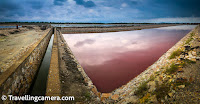 A half day detour to Sambhar Salt Lake, Rajasthan from NH48 || What makes India's Largest Inland Salt Lake worth visiting in winters?
A half day detour to Sambhar Salt Lake, Rajasthan from NH48 || What makes India's Largest Inland Salt Lake worth visiting in winters?
 A fulfilling stop at Mandore in Jodhpur, Rajasthan || The old seat of the Rathore clan and also the birthplace of Mandodari
A fulfilling stop at Mandore in Jodhpur, Rajasthan || The old seat of the Rathore clan and also the birthplace of Mandodari
 The Golden Fort of Jaisalmer, Rajasthan || A thriving, pulsating mini city within the walls of the fort
The Golden Fort of Jaisalmer, Rajasthan || A thriving, pulsating mini city within the walls of the fort
 The splendid architecture of Patwon ki Haveli in Jaisalmer, Rajasthan || One of the most opulent of the havelis in Jaisalmer
The splendid architecture of Patwon ki Haveli in Jaisalmer, Rajasthan || One of the most opulent of the havelis in Jaisalmer
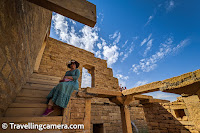 The Abandoned Village of Kuldhara near Jaisalmer, Rajasthan || Facts and Fables about why the Paliwal Brahmins abandoned this village of their ancestors
The Abandoned Village of Kuldhara near Jaisalmer, Rajasthan || Facts and Fables about why the Paliwal Brahmins abandoned this village of their ancestors
 The Amazing Pokaran Fort near Jaisalmer, Rajasthan || A beautiful structure that effortlessly blends with the desert landscape it is built in
The Amazing Pokaran Fort near Jaisalmer, Rajasthan || A beautiful structure that effortlessly blends with the desert landscape it is built in
 Vedi Temple inside KumbalGarh Fort, Rajasthan - 3 Storey Octagonal structure standing strong on 36 pillars around world's second largest wall
Vedi Temple inside KumbalGarh Fort, Rajasthan - 3 Storey Octagonal structure standing strong on 36 pillars around world's second largest wall













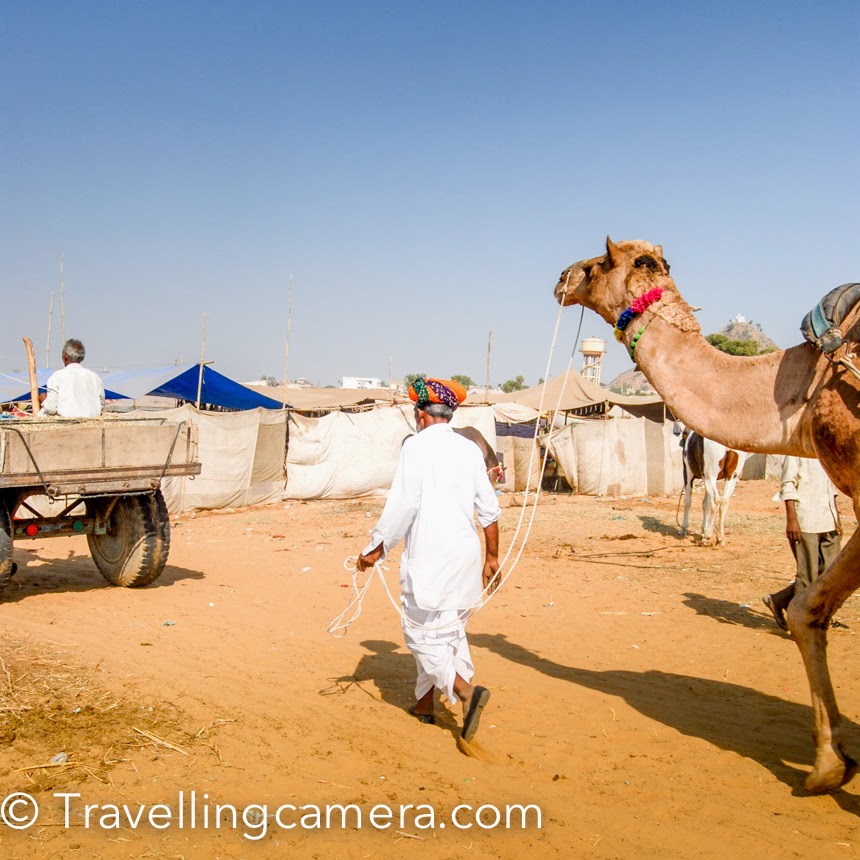








.jpg)








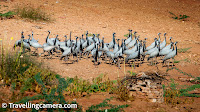



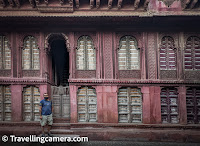



.jpg)

.jpg)
Comments